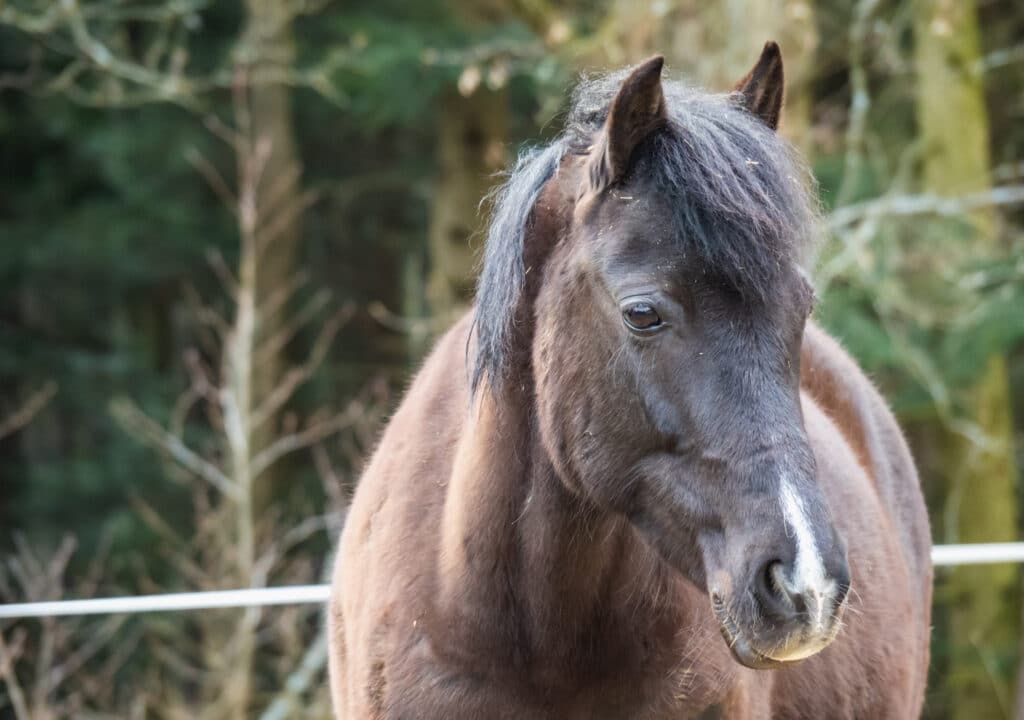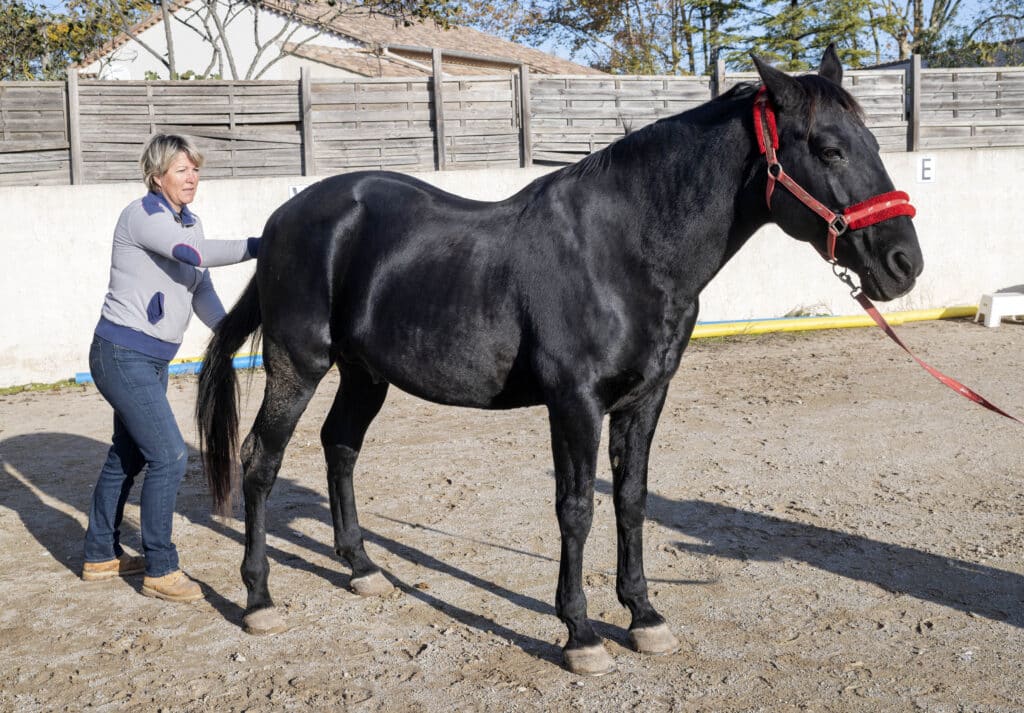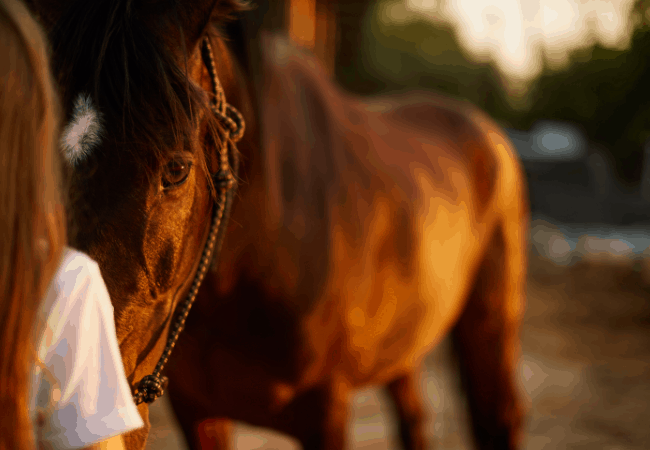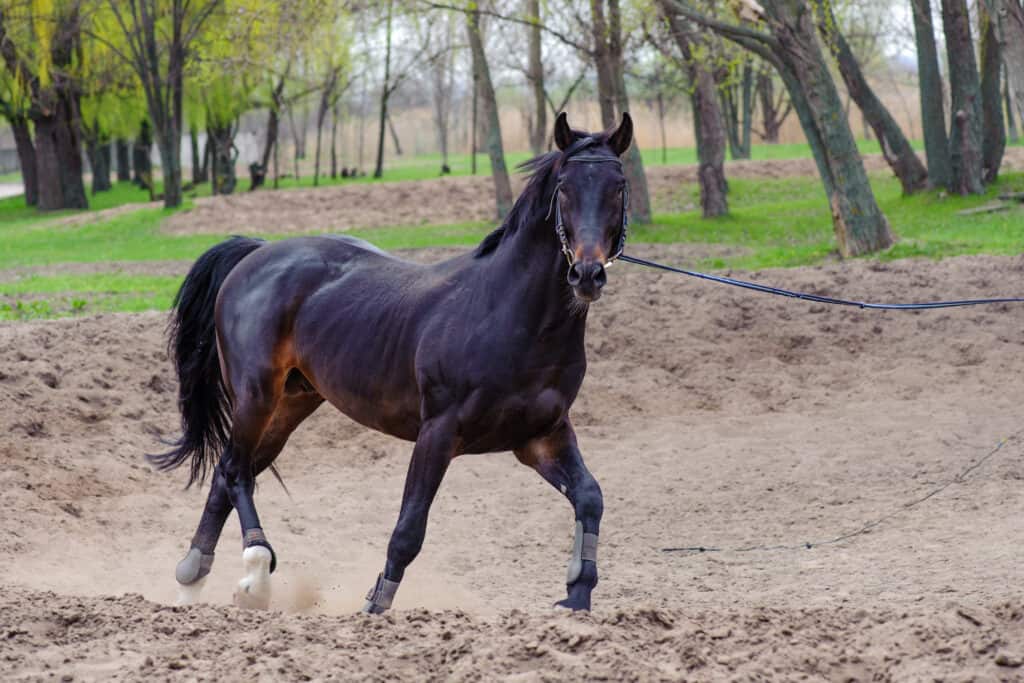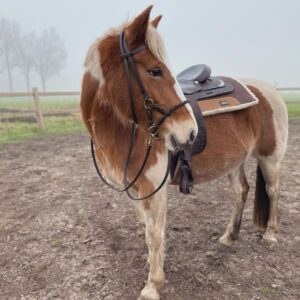Does your horse act up when you are trying to saddle him? Does he buck as soon as you get on? Maybe he behaves okay at the walk and trot but explodes at the canter. All of these are signs of cold back in horses. In this article, we will discuss the causes of cold back in horses and ways to help.
What is Cold Back in Horses?
The term cold back has nothing to do with temperature. Instead, the term refers to a horse that objects to the “cold” feel of the saddle leather. There are three theories to what causes cold back in horses: pain, training, and personality.
Signs of Cold Back
Signs of cold back can range from mild to dangerous, depending on the cause and severity. Here is a list of the most common symptoms:
- Not wanting to be saddled (hollowing away from the saddle, stomping, nipping, etc.)
- Sensitive when the girth is tightened
- Not standing to be mounted
- Tense when ridden
- Bolting/ bucking/rearing
- Cow kicking
- Not wanting to collect or round up the back while being ridden
- Reacting when pressure is applied on either side of the withers and along the spine
Cold Back in Horses Caused by Pain
Modern science has taught us that the majority of cold back in horses is caused by pain. If your horse is showing signs of cold back, pain is the first thing to rule out. Check your tack first. Saddles that do not fit correctly will cause deep muscle injury, making it very painful each time the saddle is tightened. Don’t forget to check your saddle pads. Stickers, thorns, or other debris can easily get hung up in the pad.
The girth is next on the list. Each time the saddle is tightened, stretch the legs forward. Stretching pulls any excess skin out from under the girth and prevents pinching. It is also a good habit if the horse has a long hair coat. It is advisable to girth up in stages. Tighten the girth enough to keep the saddle from rolling and hand walk the horse, then tighten again.
Tack is not the only reason for back pain. A multitude of things can cause it. Injury, kissing spine, inflammation of the ligaments on top of the spine, muscle strain, and conformation issues are just a few. If your tack passes inspection, then contact your veterinarian for an evaluation.
Treatments for Back Pain in Horses
The treatment will depend on the cause of the pain. As discussed above, the first thing to check is if your saddle is fitting correctly. Master Saddle fitter Kate Ballard explains how to know if an English saddle is fitting correctly in this video. Jochen Schleese, CMS, illustrates the 9 Point of Western Saddle Fit in this series of videos.
Once saddle fit is ruled out, a veterinarian will need to be consulted. Dr. Kent Allen, Official Veterinary Coordinator for the Olympic Games and the World Equestrian Games, has this to say, “The ideal treatment is one that addresses both bone and soft tissue, lasts four to six months, and is relatively inexpensive."
Your vet will consider numerous treatment options, depending on the type and severity of the back pain. Treatment can vary from muscle relaxants, a magnetic blanket, or possibly surgery. Smart Pak Ask the Vet has this video explaining different options.
Personality?
Cold back is not always caused by pain. Some horse owners claim it is a personality issue. Have you ever heard that a particular breed or bloodline is prone to be cold backed? In the quarter horse industry, horses with Hancock in their bloodline can have a reputation of being cold backed. Not all Hancock bred horses will be cold backed. Some are fantastic horses.
I pick on Hancock horses because I have a beautiful blue roan Hancock bred mare. Her groundwork is excellent. However, she needs to be lunged for ten or fifteen minutes before riding. She would give any rodeo bronc a run for their money during that time. After she warms up and relaxes, she can be ridden and worked like a charm all day. I am hoping it is because she is still green broke and will mature out of it. But, if the rumors are right, maybe not.
Tips for Working with a Cold Backed Horse
Cold back can be a training issue. The horse may be green and need more experience. Remembering past trauma or pain can also be a reason for cold back. Horses testing leadership are the ones that will work well for one rider and not for the next. The old-timers will tell you to let them blow off that steam. But that can be very intimidating and dangerous. Get help from a professional trainer if the horse has become dangerous.
Horses need to learn that bucking, bolting, etc. is not allowed. In our article on Why Horses Kick and How to Teach Them to Stop, we discuss the importance of being the leader and making your horse move its feet. We can use these same basic principals to manage cold back in horses when it's not caused by pain. Here are the recommended steps:
Lunging – Start by lunging the horse. Most horses that buck while being lunged will buck when ridden at some point.
- Suppose the horse bucks, keep him moving forward. A round pen will help you keep him in a localized area if he wants to pull away.
- He needs to keep moving forward until he lopes one or two circles without bucking.
- Stop him and pat him for doing the right thing, then ask him to move forward again.
- If he bucks, keep him moving forward.
- Keep repeating this process until he will lunge without any bucking.
- Rinse and repeat each day until he doesn’t buck at all.
Horses That Bolt or Rear When Being Mounted - Horses that bolt or rear when being mounted can be reacting to remembered pain or the pull of the saddle on their back. Whatever the reason, they are not showing respect to the rider when they will not stand to be mounted and wait for instructions.
Horse Courses by Elaine Heney
- Listening to the Horse - The Documentary by Elaine Heney & Grey Pony Films
- Shoulder In & Out Training for better balance, bend & topline development with your horse
- Over 110+ Polework Exercises & Challenges to Download
- Dancing at Liberty & Creating Connection with Your Horse (11 lessons) - Grey Pony Films
- First, your horse needs to respect you on the ground. He needs to understand that he moves his feet when and where you say he moves his feet.
- If he moves off when you lift your foot into the saddle, pull his head toward you and make him move his rear end away from you in small tight circles. You want to make standing easier than moving.
- If the horse bolts when your bottom hits to saddle, keep your hands low and pull him in small circles, again making moving uncomfortable. Ask him to stop and stand still. He is not to move one step until you say he can. If he moves, repeat the circles.
Final Thoughts
Cold back horses can be intimidating and dangerous. The majority of cold back behaviors are caused by pain. By understanding why your horse is acting cold backed, you can develop a treatment and training program with your vet and trainer to eliminate these behaviors. Remember, horses take patience and understanding, but a respectful and loving relationship is worth it.

